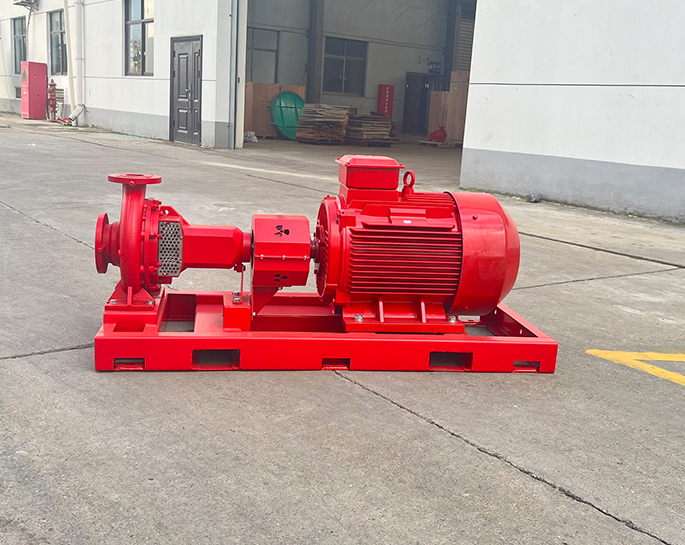How do water supply requirements influence fire pump selection and design?
Apr 15, 2024
Share:
Water supply requirements play a significant role in determining the selection and design of fire pump systems. The adequacy of the water supply directly impacts the performance and effectiveness of the fire protection system in combating fires. Here's how water supply requirements influence fire pump selection and design:
1. **Flow Rate**: The required flow rate of water is one of the primary factors in selecting a fire pump. This is determined based on factors such as the size and occupancy of the building, the hazard level, and local fire protection codes. The fire pump must be capable of providing the required flow rate to operate the sprinkler system, standpipes, and other fire protection equipment effectively.
2. **Pressure**: In addition to flow rate, sufficient water pressure is crucial for ensuring effective fire suppression. The fire pump must be able to deliver water at the required pressure to overcome friction losses in the piping system, elevation changes, and to provide adequate water distribution throughout the building.
3. **Water Source**: The availability and characteristics of the water source, such as municipal water supply, onsite water storage tanks, or natural water bodies, influence fire pump selection and design. If the available water source cannot provide the required flow rate or pressure, additional measures such as installing booster pumps or water storage tanks may be necessary.
4. **Hydraulic Calculations**: Hydraulic calculations are performed to determine the required flow rate and pressure at various points in the fire protection system. These calculations consider factors such as pipe size, length, elevation changes, and the hydraulic characteristics of the water supply. The results of these calculations guide the selection and sizing of the fire pump to ensure adequate performance.
5. **System Redundancy**: Depending on the criticality of the building and the reliability of the water supply, fire pump systems may incorporate redundancy to ensure continuous operation during emergencies. Redundancy can involve the installation of multiple fire pumps, backup power sources, or alternative water sources to mitigate the risk of system failure.
6. **NFPA Standards**: Fire pump selection and design must comply with relevant NFPA standards, such as NFPA 20 (Standard for the Installation of Stationary Pumps for Fire Protection), which provide guidelines for the design, installation, and testing of fire pump systems. These standards outline specific requirements for water supply, pump performance, and system design to ensure effective fire protection.
Overall, the water supply requirements dictate the capacity, configuration, and features of the fire pump system to ensure it can reliably deliver water for fire suppression under various conditions. Close coordination between fire protection engineers, hydraulic engineers, and regulatory authorities is essential to ensure that the selected fire pump meets the specific needs and requirements of the building or facility.

1. **Flow Rate**: The required flow rate of water is one of the primary factors in selecting a fire pump. This is determined based on factors such as the size and occupancy of the building, the hazard level, and local fire protection codes. The fire pump must be capable of providing the required flow rate to operate the sprinkler system, standpipes, and other fire protection equipment effectively.
2. **Pressure**: In addition to flow rate, sufficient water pressure is crucial for ensuring effective fire suppression. The fire pump must be able to deliver water at the required pressure to overcome friction losses in the piping system, elevation changes, and to provide adequate water distribution throughout the building.
3. **Water Source**: The availability and characteristics of the water source, such as municipal water supply, onsite water storage tanks, or natural water bodies, influence fire pump selection and design. If the available water source cannot provide the required flow rate or pressure, additional measures such as installing booster pumps or water storage tanks may be necessary.
4. **Hydraulic Calculations**: Hydraulic calculations are performed to determine the required flow rate and pressure at various points in the fire protection system. These calculations consider factors such as pipe size, length, elevation changes, and the hydraulic characteristics of the water supply. The results of these calculations guide the selection and sizing of the fire pump to ensure adequate performance.
5. **System Redundancy**: Depending on the criticality of the building and the reliability of the water supply, fire pump systems may incorporate redundancy to ensure continuous operation during emergencies. Redundancy can involve the installation of multiple fire pumps, backup power sources, or alternative water sources to mitigate the risk of system failure.
6. **NFPA Standards**: Fire pump selection and design must comply with relevant NFPA standards, such as NFPA 20 (Standard for the Installation of Stationary Pumps for Fire Protection), which provide guidelines for the design, installation, and testing of fire pump systems. These standards outline specific requirements for water supply, pump performance, and system design to ensure effective fire protection.
Overall, the water supply requirements dictate the capacity, configuration, and features of the fire pump system to ensure it can reliably deliver water for fire suppression under various conditions. Close coordination between fire protection engineers, hydraulic engineers, and regulatory authorities is essential to ensure that the selected fire pump meets the specific needs and requirements of the building or facility.


.png)
.png)

.png)


